Lab Diaries #1 - How Do Scientists Cultivate Cell Lines and Why Do They Need Them?
Hello Steemians, hope you are all having a very productive week and can hardly wait for weekend to come ;)
For some time already I've been thinking about starting a section in my blog which would be dedicated to daily challenges all scientists encounter while working in the lab, including myself. The idea is to talk about how it's like to be scientist in real life (definitely not like in movies or CSI series!) and to describe typical and atypical days in a cancer research lab.
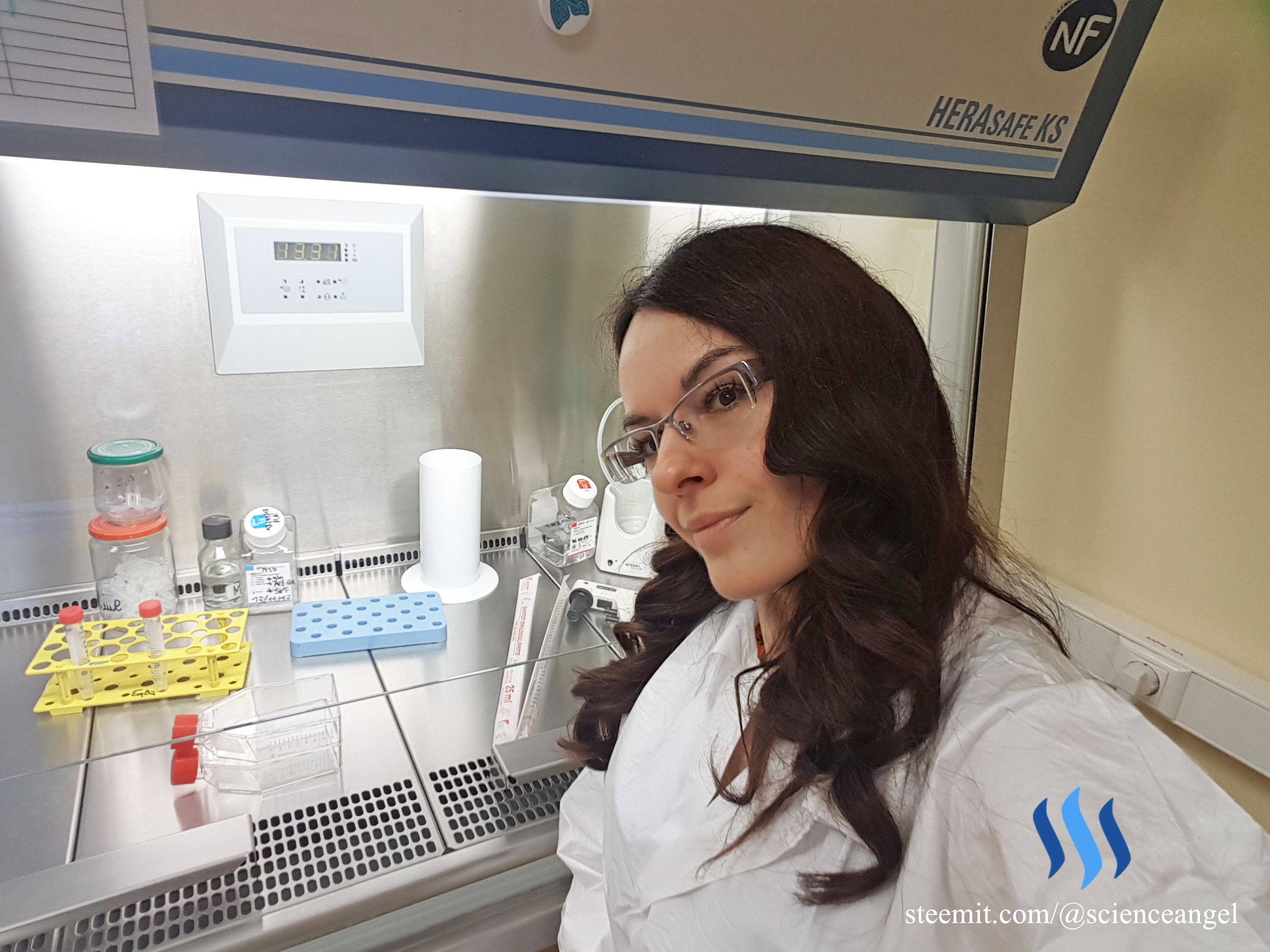
Don't be afraid, that's just me, no make-up, all natural :)
Today I will introduce you to cell culturing and importance of using cell lines as model system in research.
Cell culture - what is that?
By definition, cell culture represents removal of cells from an animal or plant and their subsequent growth in an artificial environment which mimics conditions of the natural environment (organism) they derive from. Distinction can be made between primary cultures, where cells are isolated directly from the tissue and proliferated until they reach confluence (cell density at which no further growth is possible), and cell lines, which are established after the first subculture of primary cultures.
Cell lines can be finite, which means they have limited life span (usually ones derives from primary cultures and normal cells) and continuous cell lines, meaning that those cells became immortal though a process called transformation. Cancer cell lines are the example of continuous cell lines, which are the cell lines I'm working with (more precisely - human cancer cell lines) and I will talk about them in more detail.
How do we grow them?
Cell lines are usually grown in culture flasks, that look like this:
Culture flasks are filled with growth media, which provide all the nutrients (when supplemented with serum) required for cell survival and growth. There are different types of growth media, because different cell types have different needs regarding nutrients. For example, typical growth medium called Roswell Park Memorial Institute (RPMI or RPMI 1640) contains glucose, salts, amino acids, vitamins and pH indicator (phenol red).
Why do we need a pH indicator in growth media?
It is of great importance to monitor the acidity of growth media, because most mammalian cells grow well at pH 7.4, and too much acidity or alkalinity can kill them. If the media color is orange-red, that means that pH is optimal for cell growth. In case of high confluence of cells or bacterial infection of cell culture, the metabolic products of cell growth increase acidity of media and it becomes yellow. Likewise, when alkalinity of medium increases, it turns its color to purple.
How do we maintain the optimal pH of media in cell culture flasks?
Growth media contains an organic buffer called HEPES or CO2-bicarbonate based buffer, which buffer the cells in culture against changes in the pH. Changes in atmospheric CO2 influence the pH of the medium because the pH of the medium is dependent on the balance of dissolved CO2 and bicarbonate (HCO3–). This is why it is necessary to maintain levels of exogenous CO2 constant, and that's done by keeping cell culture flasks in special incubators:
Moreover, incubators maintain constant temperature that is optimal for cell growth (for human cell lines it is of course 37 oC) and high level of humidity, in order to prevent evaporation of media from cell culture dishes.
What are the lab safety rules we must follow when we work with biological material?
In every lab safety comes first! This means that certain rules and measures must be strictly followed to reduce or eliminate exposure of people and the outside environment to potentially harmful biological agents.
When it comes to working with cell lines, all manipulation with them is performed in cell culture hoods. They are the most important equipment to provide protection of infectious splashes or aerosols to the experimenter, as well as to provide sterile environment for working with cell lines, by having a constant air flow directed to outside of the hood.
Personal protective equipment (PPE) serves as immediate barrier between the experimenter and the hazardous agent, and includes items such as gloves, laboratory coats, shoe covers, face shields, safety glasses, etc. On the first picture you saw me wearing the special coat that it's worn only when working in cell culture room (it mustn't be taken outside!) and I also wear gloves that cover my hands and part of the coat sleeves, so that no part of my skin is exposed to potential hazardous agents.
Shoe covers should cover your shoes completely and must be put on before entering the cell culture room, and also taken off before leaving it. They protect the cell culturing environment from outside dirt, ans also provide protection for the experimenters and outside environment, keeping the potential spills of hazardous material off their shoes:
Why do we use cell lines in research?
Cell lines are irreplaceable tool in modern research, especially when we talk about cancer research. Each experiment we design begins with cancer cell lines, because they are basic model system for studying molecular pathways responsible for cancer development, as well as to study the effect of new drugs with potential anticancer activity. Before we are allowed to proceed to using experimental animals in our research, we must have valid and reproducible results in cell lines.
I hope this was interesting read and that you learned something you didn't know before about using cell lines in cancer research.
Until next time, relax and keep steemSTEM! ;)
Literature
Roswell Park Memorial Institute medium
CO2 Incubator / Cell Culture Incubator
For more scientific-related content check steemSTEM. Follow me if you like my posts and want to read some more ;) If you have any thoughts/suggestions fell free to leave a comment!

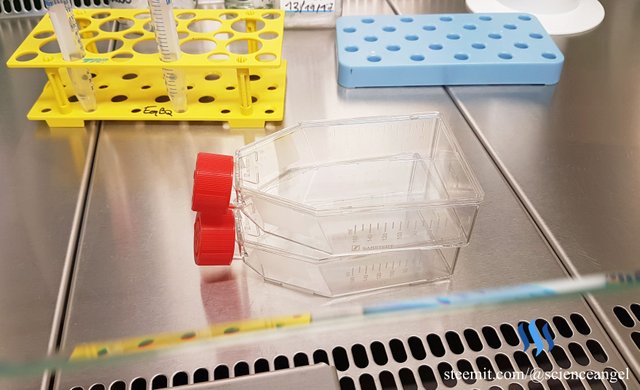
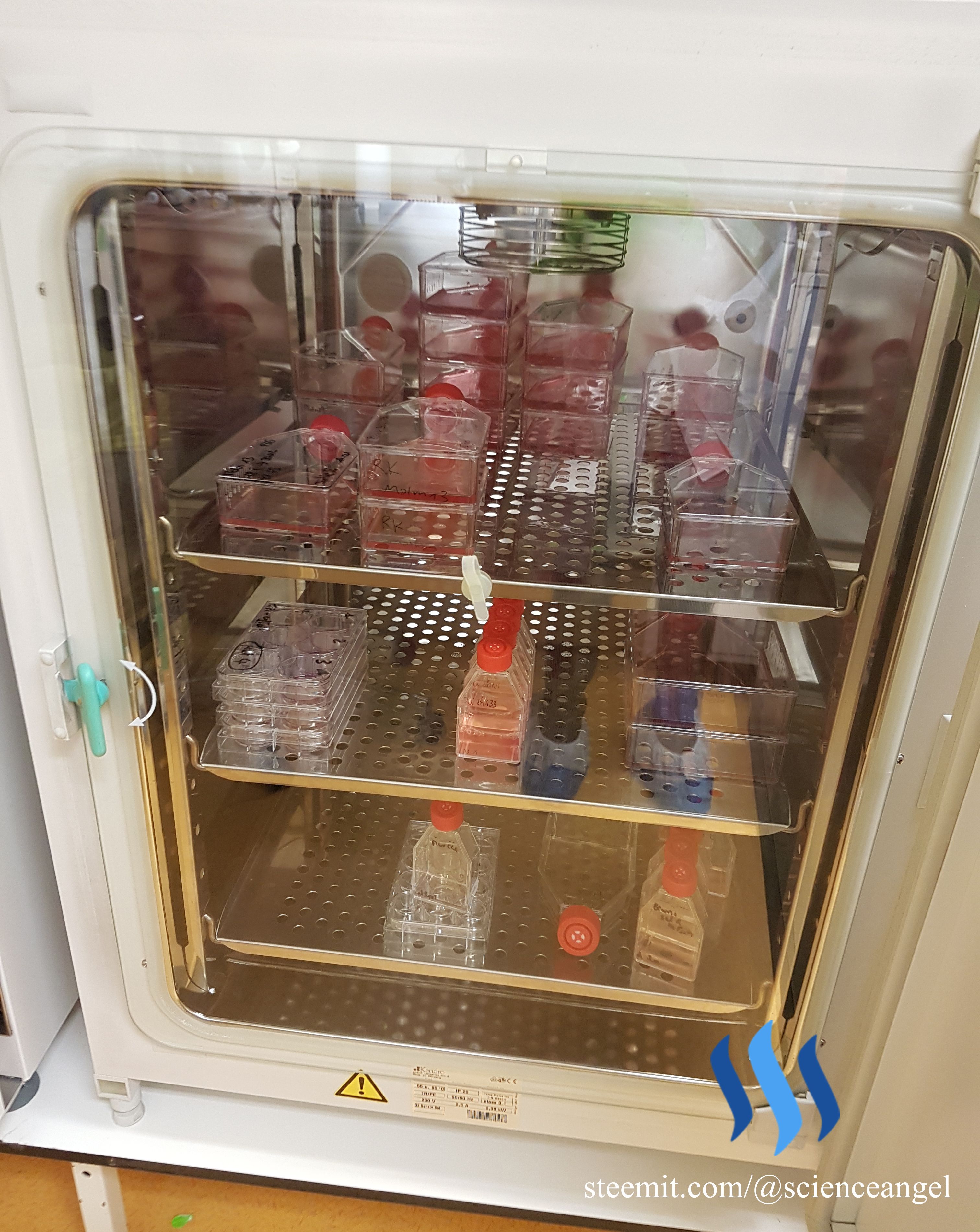
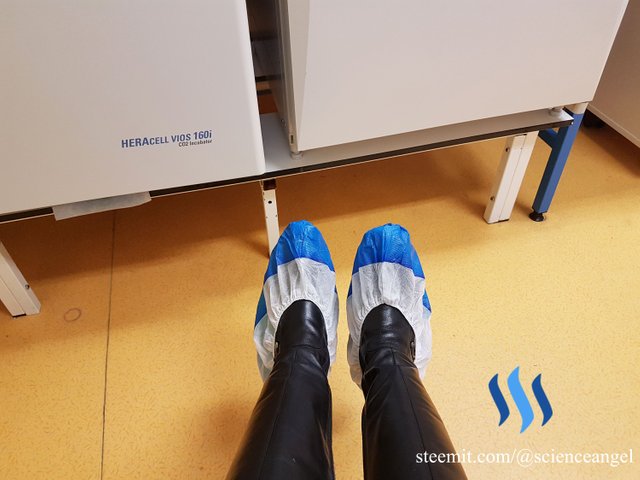
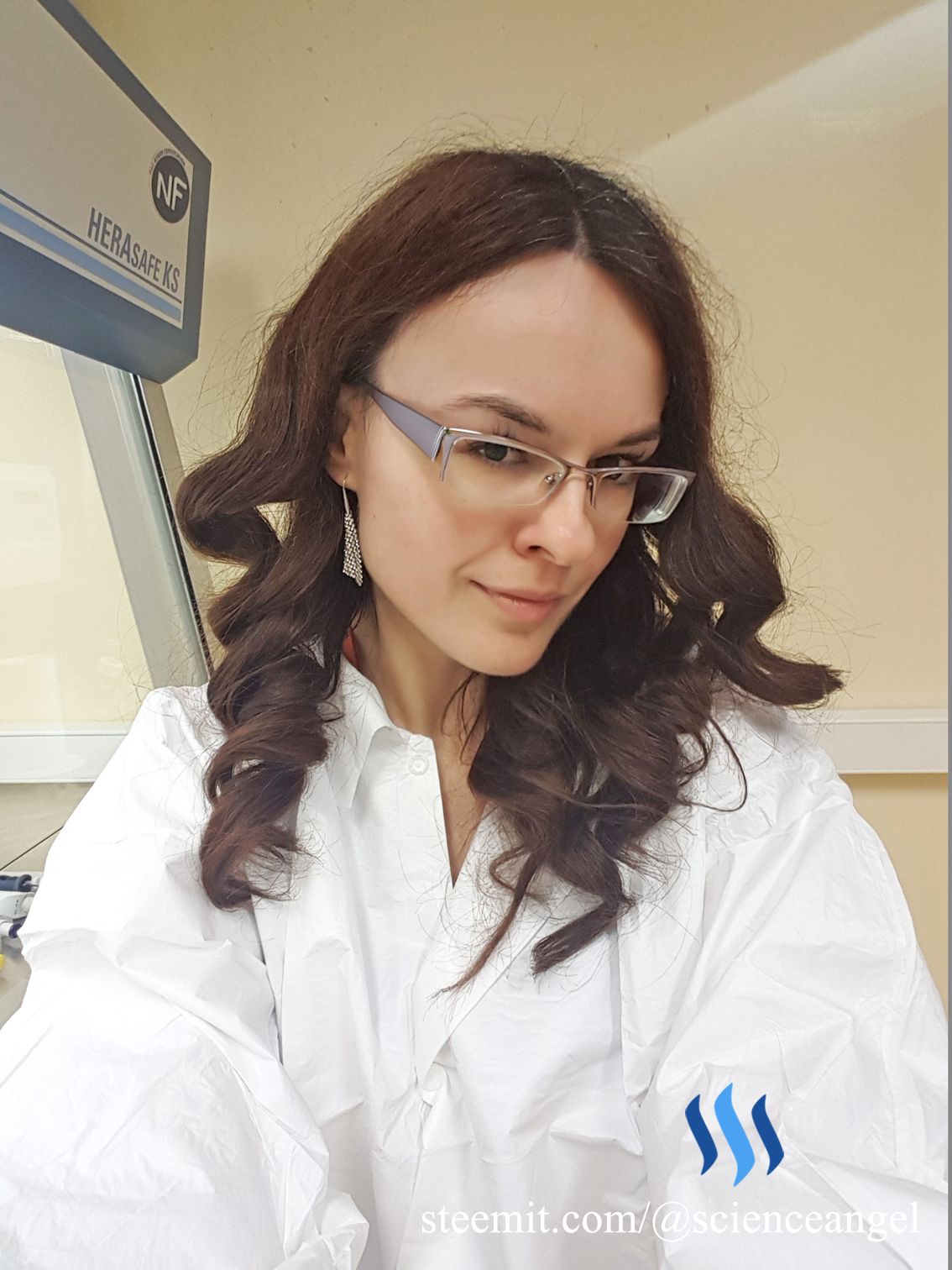
Great idea for a series. It'd be useful for budding scientists to learn what daily lab research is all about.
Thanks for this. I worked in a cancer research facility after undergrad and we collected biopsied tumors that we stored in liquid nitrogen. One of the greatest things I remembered learning there was how to culture those cells. I was amazed at how rigid you had to be with sterile technique, or else you end up growing some other random cells, bacteria or fungus cells. lol. Would love to hear more about your work in later ones. Thanks again.
Good and complete introduction for beginners, keep up the good work :)
Thank you very much, I'm very glad you liked it! :)
I do love the smell of ethanol in the morning and the dreaded mycoplasma contamination in the incubator :D Those were the good old days of being a scientist doing tissue culture.